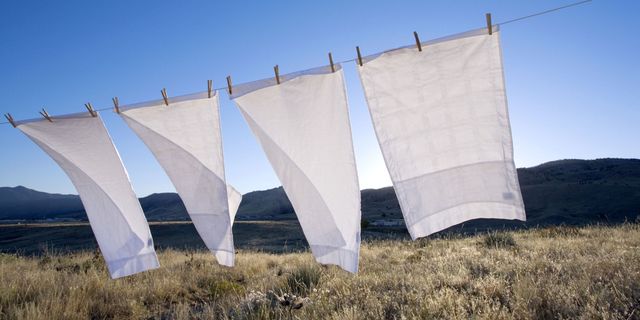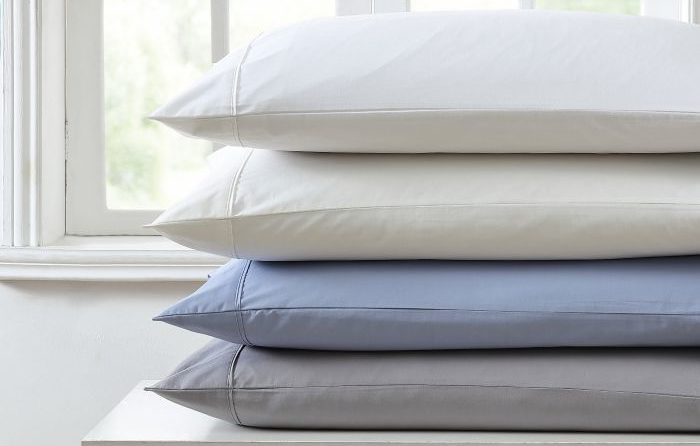How Often Should You Change or Wash Your Pillowcase?
Doctors and scientists have said it over and over again. Maintaining essential hygiene habits could protect you from a high percentage of infectious and self-limiting diseases. This includes washing or changing your pillowcase which you have direct contact with several hours every day.
Throughout the day, we interact with many aspects of the outside world packed with an unimaginable number of pathogens. The hair you cut at the salon? Check. The daisies you grabbed from the field? Check.
Hygienic habits are numerous. They include washing our hands regularly, trimming our nails, brushing our teeth daily, and taking regular showers. Now, imagine going back home after a tough night at work or a sandstorm and jumping into bed, day after day, without changing your pillowcase.
Keeping your pillowcases in tip-top cleanliness is essential for your hair, skin, and overall health. But how often should you change your pillowcase? Stick around to find out!
Why Even Bother With Changing Pillowcases?
Regardless of your pillowcase type, all pillowcases are a refuge for bacteria, sweat, and dust. Even if your pillowcase might look and smell clean, it’s probably holding a mass of dandruff, dead skin cells, and dust mites that you know nothing about.
There are certain pillowcases for acne, which can help prevent breakouts brought on by a dirty pillowcase, but it is still recommended to wash and change your pillowcase periodically.
If you’re a skincare fanatic or someone who tends to fall asleep with cosmetics on, your case will collect remnants over time, which may irritate your skin and allow nasty bacterial growth. Consequently, this will lead to or worsen any existing allergies.
Dr. Elizabeth Trattner, a medicine practitioner, has discussed that dust mites are primary causes for asthma, and they cause the sleeping person to wake up with a blocked nasal passage.
Besides, don’t forget the drool! Sleeping on a week’s worth of drool is never a good idea. The pillowcase may start molding in dire cases, making the sleeper susceptible to fungal infections like Onychomycosis.
Furthermore, a few studies have shown that dirty pillowcases could decrease the quality and quantity of sleep.
How Frequently Should You Actually Change Your Pillowcase?
Now that you have the basics down, let’s get to business. The real answer to this question depends on you! First, ask yourself a few questions:
- How much time do I spend outdoors?
- How often do I shower?
- Do I have a pet?
- Do I sweat or drool in my sleep?
- Do I fall asleep with makeup or skincare products?
- What kind of climate do I live in?
- What type of pillowcase fabric do I have?
- Do I have any allergies?
The range starts from 2–14 days. If you’re someone who tends to be highly allergic or have extremely sensitive skin, it’s recommended that you change your pillow cover every 2-3 days. Additionally, if you live in a more humid climate, tend to sweat in your sleep, or have a pet, consider laundering your case every 3–7 days.
However, if the majority of your pillow encounters are hygienic, you may change your pillowcase every two weeks or twice per month. There isn’t right or wrong when it comes to this matter, as long as you’re highly aware of all your casing interactions.
Choosing The Right Pillowcase Fabric
Pillowcases are manufactured in different fabrics for different purposes. These include:
Cotton
Cotton pillowcases are the most commonly used because of their easy laundering and maintenance. However, cotton fabric tends to absorb oils and dirt, making their laundry-lifespan much shorter. In terms of hair and skincare, cotton is not the most recommended material due to its creasing tendency.
Satin
Although slightly costly, satin pillowcases are ideal for hair and skin due to their non-Friz, smooth texture. Satin is not as absorbent as cotton but needs to be handled carefully during laundering. While bleach is contraindicated, it should be washed mainly with cold water.
Silk
Similar to satin, silk pillowcases offer a ton of beauty benefits. However, they’re very delicate and high-priced. While they may not absorb oil and dust as much as others, they need to be carefully hand washed.
Linen
Unfortunately, this high-quality flax material is not being manufactured in immense quantities nowadays. It's perfect for the spring and summer due to its breathable, soft texture. However, linen has to be hand-washed with mild or natural detergents only.
Nylon
Nylon is the second most popular pillowcase material after cotton. It’s made to have the silk feel and look while maintaining cotton’s laundering efficiency. It’s highly non-absorbent, which may cause your face to oil up and sweat.

Frequently Asked Questions (FAQ) About Washing or Changing Pillowcases
We combined three of the most frequently asked questions about pillowcases to get you fully covered on the matter! Enjoy.
What happens when you don’t change your pillowcase?
Over time, the pillow cover may get stained, wear out, and need to be replaced. Even worse, it could get as dirty as a toilet seat. Scientists have discovered that samples from toilet seats and unwashed pillow cases were indistinguishable in terms of bacteria.
Why do pillows turn yellow?
The major reason behind pillow yellowing is the build-up of sweat. Even if pillow covers were consistently placed under a well-laundered pillowcase, the pillow might still turn yellow. Therefore, make sure to air your pillows out, wash them gently every few weeks, and replace them every 1–2 years.
Is it bad to sleep on a pillow without a pillowcase?
Pillowcases serve as a form of protection for you and your pillow. Instead of throwing your pillow out every few weeks, pillowcases are much easier to maintain and launder. They allow you to keep up your hygienic lifestyle.
Not only that, but pillow slips also protect your pillow from dirt, oil, stains, and allergens such as dust mites. Technically, you may sleep on your pillow without a pillowcase but otherwise is recommended.
Our Conclusion on How Often You Should Change Your Pillowcase
Hygienic routines don’t only include how we manage ourselves but also managing what belongs to us. Therefore, we advise you to keep your bed only for sleeping. No phones (since people take them everywhere they go), food, or even lounging out on there to keep it as clean as possible. If you do this, changing or washing your pillowcases every 2 weeks should be fine.
Moreover, make sure to choose the right pillows, pillowcases, and bed sheets for you. For example, don’t opt for silk or satin when you aren’t free enough to hand wash them.

Hello! My name is James, a researcher of pillows and getting a great night’s sleep with over 10 years of experience! Graduate of the University of Kansas with a Physiology Degree. I enjoy writing, camping, reading, traveling abroad, swimming, and educational research. Contact me at the social links below!

